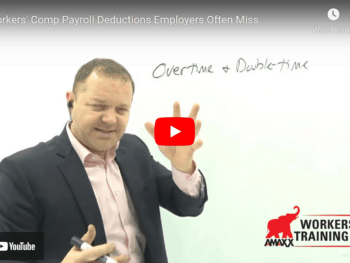Guaranteed Cost Programs– There are two types of guaranteed cost programs: a) standard guaranteed cost plans and b) discounted guaranteed cost plans. These premiums are charged on a going-forward basis with a rate applied to an exposure base such as payroll, sales or vehicles. The premium varies only with changes to the exposure bases. This means that the premium is generally not loss sensitive. However, past years experience is taken into account in future years so while not directly loss sensitive, poor experience does adversely affect the cost of your future years premium.
Click Link to Access Free PDF Download
“Workers’ Comp Claims Review Checklist: 9 Must-Have, Serious-Impact Elements”
The insured forgoes flexibility in this arrangement in that the programs are not “unbundled” and claims handling service is provided by the insurance company because the insurance company is taking much of the risk. Because the premium is paid upfront the insured forgoes any benefit of cash flow other programs might offer. Guaranteed cost coverage is normally written for smaller companies that want “first dollar coverage” without a deductible. Larger companies that purchase this type of program generally have a “per claim” deductible. The deductible plus the loss of cash flow often makes this undesirable for larger companies. In a discounted cost plan the insurer invests the premium then gives the insured a discount based on that amount.
The basic drawback with this type of plan from a cost containment perspective is that the insured (you, the employer) must use the services of the insurance company and there will be very little flexibility in any special arrangements you may want such as using a particular medical provider or PPO (group of providers), having on-site file reviews, engaging the insurance company in training programs, having the insurance adjuster contact the worker before and after medical appointments (unless this is part of their best practices), request participation from the carrier in your transitional duty programs, etc. Basically, you turn your claims over to the insurance company and have very little input in settlements, selection of defense counsel or other aspects of the claims.
You CAN however, still manage the workplace injury procedures within your workplace including requiring the employees to obtain medical restrictions from their doctors on the first medical visit. You can require them to participate in transitional duty (unless prohibited by state law) when they are medically able to return to work, etc. For more information about what you CAN do from a cost control perspective consult your insurance broker and go to www.ReduceYourWorkersComp.com Thanks to Glenn Trutner at Advisen for his assistance on this article. WC Calculator www.ReduceYourWorkersComp.com/calculator.php TD Calculator www.ReduceYourWorkersComp.com/transitional-duty-cost-calculator.php WC 101 www.ReduceYourWorkersComp.com/workers_comp.php Do not use this information without independent verification. All state laws are different. Consult with your corporate legal counsel or other professionals before implementing any cost containment programs. ©2008 Amaxx Risk Solutions, Inc. All rights reserved under International Copyright Law.













